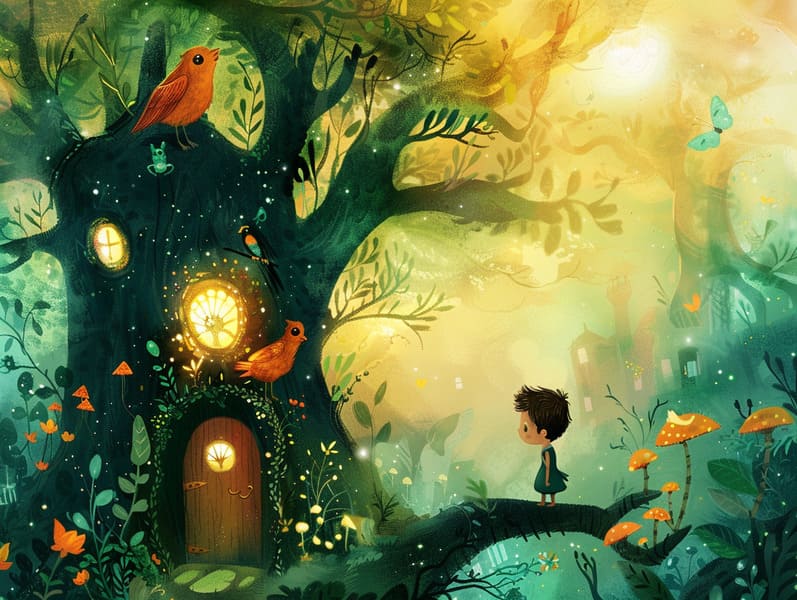Understanding the Legacy of Classic Fairy Tales with the Unchanging Grace.
Understanding the Legacy of Classic Fairy Tales with the Unchanging Grace.
Blog Article

Ancient fairy tales have long histories. These stories have been narrated from one generation to the next ages before they were ever inscribed. They sprang from a variety of societies, including Asian traditions. They were initially disseminated among adults, often carrying themes and messages related to the societal norms and beliefs of the time.
The famous Grimm duo, the two Grimm brothers, were among the first to compile and release many of these beloved narratives. Their anthology, "Grimm's Fairy Tales," included stories like "The Story of Cinderella," "The Story of Hansel and Gretel," and "Snow White," which have since become essentials in the world of timeless fairy tales. Similarly, Hans Andersen's delightful stories, such as "The Mermaid's Tale," and "The Duckling's Story," have stolen hearts worldwide, establishing their place in the pantheon of timeless fairy tales.
Though they are centuries old, classic fairy tales remain as relevant as ever, especially as kids' bedtime tales. These magical stories are now available in many formats, including colorful picture books, fantastical animations, and digital storybooks.
Their unwavering allure can be credited to several whimsical characteristics:
Significant Morals: Timeless fairy tales often present important moral lessons. Narratives like "The Tale of the Boy Who Cried Wolf" teach the value of integrity, while "The Tale of the Tortoise and the Hare" show the merits of resolve and unpretentiousness. These stories offer young readers clear distinctions between good and bad, molding their moral compass in a gentle yet important way.
Empathy and Awareness: Ancient fairy tales frequently showcase protagonists facing problems and hurdles, prompting audiences to identify with their struggles and root for their triumphs. For instance, "Beauty's Beast" emphasizes the benefit of seeing beyond looks to comprehend the inner being of a individual, advancing compassion and recognition.
Cultural Appreciation: Many timeless fairy tales are saturated in the cultural contexts from which they originated. Delving into these fairy tales can provide captivating looks into different societies, encouraging a sense of global appreciation and knowledge.
Fantasy and Imagination: The whimsical elements in traditional fairy tales—talking beasts—enliven children’s innovative ideas. These narratives guide readers to mythical realms, engendering inventive dreams and a sense of magic that continues a lifetime.
Traditional fairy tales are not only delightful but also informative. They provide mesmerizing tools in promoting various intellectual and emotional capacities in little ones. When traditional fairy tales are told out loud, they enhance speaking abilities by offering new words and complex sentence structures. This practice also develops auditory skills and attention span, as children keep up with the story, keen to see what happens next.
Furthermore, reflecting on the themes and characters of classic fairy tales can sharpen cognitive skills and analytical skills. Children learn to notice patterns, guess what will happen, and understand cause and effect. These debates also aid the young reveal their thoughts and feelings, enhancing their emotional intelligence.
In today’s cyber age, the presence of internet fairy tales has made these narratives more accessible than ever. Online platforms and apps share vast collections of old fairy tales that can be seen or listened through anytime, anywhere. Fairy tales read aloud are particularly widespread, making available an captivating way for young readers to take part in these charming stories. Audio stories and narrated videos bring characters and settings to life, often supported by delightful harmonies and music that boost the story journey.
The unending appeal of traditional fairy tales lies in their ability to modify to modern society while keeping their core messages. Contemporary reinterpretations of these narratives often highlight more diverse characters and modern settings, making them understandable to today’s audience. However, the underlying themes of guts, goodness, and equity remain unchanged, continuing to reach readers of all ages.
Old fairy tales also offer a sense of solace and recognition. They make accessible a organized narrative with a plain beginning, middle, and end, often winding up with the solving of conflicts and the triumph of goodness over badness. This certainty can be calming for young readers, providing a sense of solidity in an fluid world.
Ancient fairy tales continue to delight and inform new generations, maintaining their appeal and pertinence in modern society. As kids' bedtime tales, they highlight a perfect blend of charm and enlightenment, nurturing moral values, empathy, and creativity. The existence of online storybooks and the commonness of fairy tales narrated validate that these old stories remain available to new generations.
By safeguarding and telling these tales, we continue to treasure the rich tapestry of storytelling and cultural heritage. Whether you are delving into a artistically illustrated book, discovering a electronic collection, or listening on an audiobook, the splendor of classic fairy tales is always within reach. These stories show us of the immortal essence of fairy tales and its ability to link us across generations and cultures.
Regardless if you are browsing a colorful picture book, seeing a digital library, or listening on an read-aloud story, the spell of famous fairy tales is always within reach.
These tales show us of the immortal spell of stories and its ability to gather us across epochs and places, casting a charm that charms more info and informs alike.